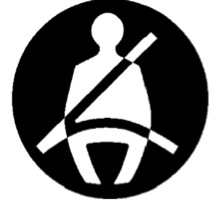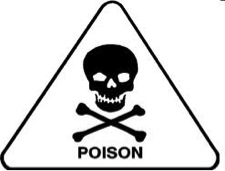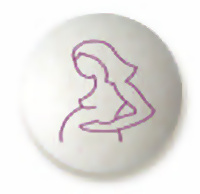
Randomized controlled trials (RCTs) came into favor in the wake of thalidomide as a method to evaluate drugs and their risks.
They were supposed to keep ineffective drugs off the market, but companies have learned that you can do any number of trials and if even some show a marginal benefit they can get their drug on the market and the others can be suppressed so no one has a true picture of the effects of the drug. Once on the market, the favorable RCTs are turned into a turbo-charger to boost sales even for debatably effective drugs. The risks get written out of the script by ghostwriters and creative publication strategies.
RCTs in turn underpin the era of guidelines we are now in. As trials became more common, sooner or later, someone was bound to get the idea that all the “scientific evidence” accumulating could be assembled to show which treatments should be used first, which second, etc. This looked like another good way to control pharmaceutical companies and the risks of drugs but it soon became just the opposite. Neither managers nor pharmaceutical companies like the idea of doctors having clinical discretion, and guidelines based on the (published) evidence have become a way to standardize clinical practice and manage risks.
What risks?
The irony is that a method introduced to manage the risks of drugs has become one that has been used to shift the blame for things going wrong over to doctors. If the drugs work well and are safe, if anything then goes wrong, it must be the prescriber’s fault. The marketing of today’s drugs always spins them as safer and safer – if so, given that things still go wrong and in fact treatment induced injury is now a leading cause of death and disability, doctors must be becoming riskier and riskier. The effects of a prescription-only embrace has been to leave the formerly healthy tree of medicine sapped by the ever more vigorous pharmaceutical ivy growing on it — at risk of being brought down by the next storm.
Three symbols tell the story
First there is the now ubiquitous seatbelt symbol. Over the last 30 years, safety features to help manage the risks of driving have become ever more common, from seatbelts to airbags, to cars engineered not to start if the driver is not belted up. In every area of life, except prescription-only medications, there is an increasing emphasis on safety warnings; even in sports and war.

Second is the poison symbol that used to feature on many medicines, particularly those that were dangerous in overdose. It is now all but illegal to refer to a drug as a poison — see The spin that no data can overcome. These symbols have completely vanished. Ironically perhaps, one of the first drugs to advertise itself as not poisonous in this sense was thalidomide. Adverts for commonly showed it being taken accidentally by a child who, we were told, would not die as a result of taking it where they would likely have died if they had taken the alternate sleeping pill — a barbiturate.

The third symbol comes from Gideon Koren, a researcher at Motherisk in Toronto, who has advocated putting a symbol featuring a pregnant woman on medications like the antidepressants in an attempt to overcome the reluctance of women to take these drugs in pregnancy.

This last symbol seems almost redundant, as despite increasing evidence that antidepressants double rates of birth defects and miscarriages and may cause mental handicap in the children born to mothers who have taken them through pregnancy, prescriptions for these drugs are escalating and they are now among the most common drugs taken in pregnancy.
Medicine used to balance the risks of a poison against the risks from an illness, but now illnesses have become the unique source of risk. Drugs, which are prescription-only because their hazards are unknown and quite liable to exceed the risks of over-the-counter or illegal drugs, in contrast are portrayed as wonderfully safe, fertilizers rather than poisons.
We can hear the desperate plea from the doctor in the Woodley inquest (see Model doctors?), “If we left her untreated and things went wrong what would you say then?”
Doctors have regressed to childhood. They look to a father figure, in particular FDA, when things go wrong. But when they do they find they are not the pet child anymore. The pharmaceutical companies are. And companies are adept at smiling sweetly at Daddy and protesting their innocence.
Put another way, in controlled trials companies have found a Philosopher’s Stone to transform base metals into gold. These trials began as a means to manage clinical uncertainty, but now deliver commercial certainty instead. And under the spell of the Stone the magic that used to lie in Doctors like Dr Kildare and Marcus Welby has migrated into pills like Prozac, Lipitor and Fosamax, while the risks have moved in the opposite direction into doctors. We need to talk about doctors before Lionel Shriver writes a book about their involvement in a school shooting.
Dr. Healy
Thanks for your perspective here on the important topic of what’s basically become identified as marketing-based medicine, adorned with what you aptly describe as “ever more vigorous pharmaceutical ivy growing on it”.
But doctors armed with their prescription pads are hardly merely passive helpless victims here. Many are willingly seduced into becoming “thought leaders” on the payroll of the pharmaceutical industry. Others are fraudulently signing their names to scientific papers they didn’t write, posing as “honorary” or “guest” authors. Physicians’ financial conflict of interest disclosures on most published journal articles read like a “Who’s Who” of Big Pharma.
As a heart attack survivor who must now take a fistful of cardiac meds each morning, the truth is that I have no clue which of these drugs were prescribed for me (and millions of other heart patients) based on flawed research or tainted journal articles. And worse, neither do my doctors.
Happily, small changes may be afoot. Many docs are actually choosing to no longer see drug reps in their offices any longer, for example. An AccessMonitor™ report from ZS Associates surveyed 500,000 American physicians, nurses and other drug prescribers two years ago, and found that the number of busy health care professionals now willing to see visiting drug reps is down by 20%. Interested physicians can, in fact, even download a “NO DRUG REPS” certificate to post in their waiting rooms: http://www.pharmedout.org/tools.htm
I live in hope.
In the United States, doctors tend to be quite pretentious about their knowledge and superior intelligence.
I agree, it’s hard to see them as helpless patsies. If non-physicians can see through the lies about psychiatric drugs, why can’t physicians? How can they ignore the obvious adverse effects patients bring to them all the time? Many of them don’t even know the most common side effects listed in the PDR or the package insert for the drugs they prescribe every day.
Yes, the pharmaceutical companies have insulated themselves from liability. But the doctors are the ones who are supposed to be gatekeepers of safe medical treatment.
When it comes to psychiatric drugs, corrupt pharma supplied the bullets, corrupt research psychiatry loaded the guns, but clinicians are responsible for pulling the triggers. They are responsible for patient harm.
It’s called tunnel vision. These clinicians were educated to a high standard, they all have a focus ‘to make the patient better.’ How many people have we met who are unable to have a quite reasonable discussion about grief, death, loss, etc. without becoming excrutiatingly embarrassed and who then head off because they cannot deal with it.
Well, clinicians are people, too. ‘Tunnel vision’ has enabled clinicians to head off with ‘pills’ as the answer to all problems, and, I agree with the comment above, the clinicians pull the trigger.
Step 1. Give the patient a pill
Step 2. Stop or start the pill
Step 3. Behaviour of patient worsens
Step 4. Acuse patient of worsening symptoms relating to ‘state of mind’.
Step 5. Patient becomes aggressive, suicidal, violent
Step 6. Patient kills himself/herself/and/or/others
Step 7. Patient accused/dead
Step 8. Clinician totally respectable, admired, superior because they have a degree and social status in life and in medicine/psychiatry.
Step 9. Clinician argues that manufacturers of ‘pills’ are right and the patient is wrong.
Step 10.Legal cases appear US/disappear UK
Step 11.Several high profile cases appear, mother’s knowing drugs are to blame for loss of child.
Step 12. Regulatory Agency refuse to admit prescription drugs cause loss of life/aggression/suicide/violence.
We. who know, think ‘out of the box’.
We know what is going on here and we are not accepting of this travesty of the destruction of human life by ‘pills’ designed to make us ‘happy’.
Any drug which ‘mucks about with brain chemistry’ is dangerous and it does not take much to grasp what a ‘pharmageddon’ is going on here.
Oh dear. I’ve just discovered, from no less a source than the fabled Mayo Clinic, that I may have intermittent explosive disorder. In a section entitled “Diagnosis: Preparing for the Interview” it says:
Your doctor may ask:
How often do you have explosive episodes?
(Every time I read an article like the one below.)
Does anything seem to makes these episodes occur more often?
(The increasing number of articles like the one below.)
Is there anything that you’ve found that can help calm you down?
(Tearing them up with a scream of frustration – and maybe a martini or two. Oops! Acoholism?)
Has anyone else in your family ever been diagnosed with a mental illness?
(Anyone ELSE? You mean you’ve decided that I have a “mental disorder”? What can I do about it?)
“There’s no one treatment that’s best for everyone with intermittent explosive disorder. Treatment generally includes medication and individual or group therapy. Many different types of drugs are used to help control intermittent explosive disorder, including: Antidepressants, such as fluoxetine (Prozac) and paroxetine (Paxil)”
(And that’s when I punched him, My Lord.)
Antidepressants for Patients with Parkinson Disease
A randomized, double-blind, placebo-controlled trial of antidepressants in Parkinson disease Neurology April 17, 2012
A well-controlled, multicenter study suggests efficacy of paroxetine and venlafaxine.
Comment: Because of safety concerns with tricyclic antidepressants, the researchers included venlafaxine, a dual-acting serotonin–norepinephrine reuptake inhibitor. Commentators note that the venlafaxine dose used is primarily serotonergic, not “dual acting.” Unfortunately, the study enrolled only 50% of its target number of patients; with larger numbers, some secondary-outcome differences might have been significant. Whether nortriptyline would be equivalent or superior to paroxetine or venlafaxine remains unknown. This study supports the initial use of a selective serotonin reuptake inhibitor for treating depression in patients with Parkinson disease. However, if response is insufficient, clinicians should consider other modalities (nortriptyline, cognitive-behavioral therapy).
(Perhaps I’ll get away with an insanity plea.)